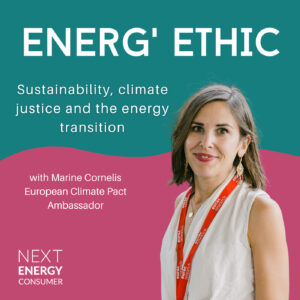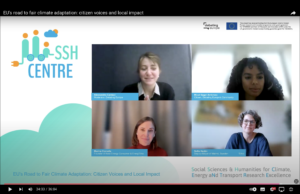What gives an energy community its soul? What turns a group of people pooling resources into a force for change?
Yesterday, I had the honor of moderating an event organized by the SCEPA INTERREG project that explored these very questions. The discussions were as powerful as the communities they sought to understand, and they left me convinced of one thing: energy communities are about far more than energy.
Yes, they provide clean power and cut costs. Yes, they represent a shift away from centralized, top-down systems. But their real power lies in something harder to quantify—connection, purpose, and a commitment to leaving no one behind.
More Than the Sum of Their Parts
Energy communities are not just projects or platforms; they are living networks. Rooted in their local contexts, they’re uniquely equipped to understand and address the challenges of their members.
Here’s what sets them apart:
- They see what others miss
From struggling households to overlooked environmental hazards, energy communities spot the cracks in the system before they widen. Their proximity gives them the power to act early, often when it matters most. - They make things happen
Energy communities are doers. They trigger action by rallying stakeholders, mobilizing resources, and building the referral networks that get things done. Their solutions aren’t theoretical—they’re grounded in the real lives of the people they serve. - They empower leaders
Local champions emerge within these groups, driving initiatives that create lasting impact. These aren’t figureheads—they’re task forces of passionate individuals working for their neighbors, their communities, and the greater good.
A Critical Role in the Fight Against Energy Poverty
Energy poverty affects at least 50 million Europeans, and as the effects of climate change worsen, that number could rise. Energy communities are already proving indispensable in this fight. By reducing energy costs, advocating for equity, and providing localized solutions, they help vulnerable populations regain control over their energy future.
But their work doesn’t stop at affordability. Energy communities also champion ownership and fairness, addressing deeper systemic issues that go beyond the monthly bill.
Recognizing Their Potential
The European Union has formalized the concept of energy communities, defining them as either citizen energy communities or renewable energy communities. Both models prioritize environmental, economic, and social benefits over profit, reinforcing the idea that energy can—and should—serve the common good.
Yet what makes these communities powerful isn’t their legal status or policy backing. It’s their ability to turn connection into action. It’s the energy within the people, their willingness to see their neighbors, their environment, and their challenges as part of a shared journey.
The Energy Within
At the event, we kept circling back to a simple truth: energy communities are only as strong as the people who power them. Their ability to foster trust, activate local strategies, and rally diverse groups of stakeholders is what makes them essential—not just in the fight against energy poverty but in the broader push for environmental and energy justice.
It’s easy to look at the challenges we face—climate change, rising energy costs, social inequities—and feel overwhelmed. But energy communities remind us that solutions don’t have to come from above. Sometimes, the most transformative changes start with a group of people who care enough to work together.
So, what makes an energy community thrive? It’s the energy within: the courage to act, the commitment to connect, and the belief that together, we can do better.
If you’re interested in energy citizenship, don’t miss the podcast series with the EnergyPROSPECTS project (Episode 50 with Edina Vadovics and Episode 51 with Janis Brizga).
What do you think? I’d love to hear your thoughts on how energy communities can shape our future. Let’s keep the conversation going.




